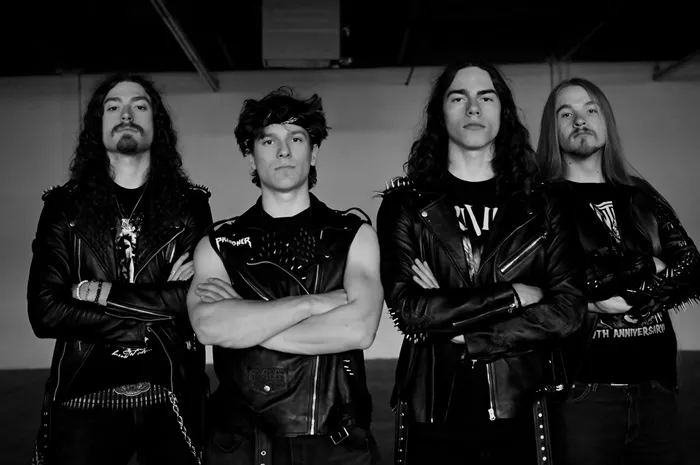Death metal, an intense and technical subgenre of heavy metal, emerged as a powerful musical force in the 1980s. Its roots are deeply entwined with the evolution of metal, taking the aggression of thrash metal to a darker and heavier level. But who truly created death metal? Let us delve into its history, influences, and early pioneers.
Understanding Death Metal
Death metal is characterized by deep growling vocals, fast and complex guitar riffs, blast beat drumming, and themes often revolving around mortality, horror, and philosophy. This extreme genre is as much about pushing musical boundaries as it is about exploring darker themes. It owes its creation to a combination of cultural, musical, and technological shifts in the 1980s.
The Cultural Context
The late 1970s and early 1980s saw a surge in rebellion against mainstream norms. This was reflected in the punk movement, which inspired the aggressiveness and DIY ethic that later influenced extreme metal bands. Similarly, the horror movie boom of the 1980s provided imagery and thematic elements that became central to death metal. Bands drew from these cultural influences to create a genre that embraced darkness and intensity.
Musical Precursors
Before death metal could form, metal itself had to evolve. The New Wave of British Heavy Metal (NWOBHM) in the late 1970s, spearheaded by bands like Iron Maiden and Judas Priest, introduced faster tempos and twin guitar harmonies. In the early 1980s, thrash metal, led by bands like Metallica, Slayer, and Megadeth, took metal to a faster and more aggressive level. Thrash metal laid the groundwork for the even more extreme sounds of death metal.
The Birth of Death Metal
Pioneering Bands and Albums
The question of who created death metal cannot be answered with a single name. Instead, it emerged through the collective efforts of several bands. The following pioneers played a significant role in shaping the genre:
Possessed
Possessed, an American band from California, is often credited as one of the first death metal bands. Their debut album, Seven Churches (1985), is widely regarded as the first death metal album. With tracks like “Death Metal” and their aggressive approach, Possessed set the blueprint for the genre. Jeff Becerra’s guttural vocals and Larry LaLonde’s shredding guitar work pushed the boundaries of thrash into darker territories.
Death
Death, founded by Chuck Schuldiner in Florida, is another cornerstone of death metal. Initially called Mantas, the band transitioned to the name Death in 1984. Their early demos, such as Death by Metal (1984), displayed raw and brutal elements that became synonymous with the genre. Death’s debut album, Scream Bloody Gore (1987), is considered one of the definitive death metal releases, showcasing Schuldiner’s intricate guitar work and harsh vocals.
Morbid Angel
Morbid Angel, formed in 1983 in Tampa, Florida, further solidified death metal’s technical and brutal characteristics. Their 1989 album Altars of Madness introduced complex compositions, intricate solos, and relentless drumming, influencing countless bands. Trey Azagthoth’s innovative guitar techniques made him a standout figure in the genre.
Regional Scenes and Influences
The American Scene
The United States, particularly Florida, became a hub for death metal in the late 1980s. Studios like Morrisound Recording in Tampa played a crucial role in shaping the genre’s sound. Bands such as Obituary, Deicide, and Cannibal Corpse emerged from this fertile ground, each bringing their unique styles to the table. The scene thrived on tight-knit networks, with zines and tape-trading helping to spread the music globally.
The Swedish Scene
While the U.S. played a dominant role, Sweden also contributed significantly to death metal. The Swedish scene developed a distinct sound, characterized by buzzsaw guitar tones and melodic elements. Bands like Entombed and Dismember emerged from Stockholm’s vibrant underground scene, with Entombed’s Left Hand Path (1990) being a landmark release.
The Evolution of Death Metal
Subgenres and Experimentation
As death metal matured, it diversified into numerous subgenres. Technical death metal, led by bands like Atheist and Cynic, emphasized intricate musicianship and jazz influences. Melodic death metal, popularized by Swedish bands like In Flames and Dark Tranquillity, introduced harmony and melody to the genre. Brutal death metal and deathgrind pushed the limits of speed and heaviness.
Mainstream Recognition
By the mid-1990s, death metal had established a loyal global fanbase. Bands like Cannibal Corpse achieved commercial success, with their graphic album art and lyrics drawing attention from media and censorship groups. Festivals such as Wacken Open Air and Maryland Deathfest provided platforms for death metal bands to reach larger audiences.
Who Truly Created Death Metal?
The creation of death metal cannot be attributed to a single individual or band. It was a collective evolution, influenced by cultural shifts, technological advancements, and musical experimentation. However, bands like Possessed, Death, and Morbid Angel undeniably laid the foundations of the genre.
See Also: Unveiling the 10 Best Death Metal Christmas Albums Ever
Conclusion
Death metal is more than just a genre; it is a testament to the power of innovation and rebellion in music. Its origins are rooted in the collective efforts of visionary musicians who sought to push the boundaries of sound and theme. From Possessed’s pioneering efforts to Death’s technical brilliance, the genre has grown into a diverse and global movement. Today, death metal continues to evolve, inspiring new generations to explore its dark and complex depths.
Related Topics

